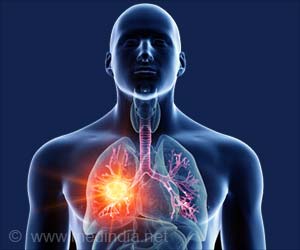Polluted air could affect blood flow in heart patients, according to a new study.
Polluted air could affect blood flow in heart patients, according to a new study.
Microscopic particles in the polluted air can adversely affect the heart’s ability to conduct electrical signals in people with serious coronary artery disease, researchers reported in Circulation: Journal of the American Heart Association.In a recent study of 48 Boston-area patients, all of whom had coronary artery disease, 24-hour Holter monitors were used to examine electrocardiograms for the conductivity change called an ST-segment depression, which may indicate inadequate blood flow to the heart or inflamed heart muscle.
“We found that an elevation in fine particles, from non-traffic as well as traffic sources, and black carbon, a marker for traffic, predicted ST-segment depression,” said Diane R. Gold, senior author and an associate professor of medicine and environmental health at Harvard University in Boston. “Effects were greatest within the first month after hospitalization, and for patients who were hospitalized for a heart attack or had diabetes.”
Previous studies have documented that exposure to road traffic can trigger heart attacks, and that particulate air pollution increases the risk for cardiac death or heart attack.
“When coal sales were banned in Dublin, Ireland, and black smoke concentrations declined by 70 percent within the next 72 months, cardiovascular deaths fell by 10 percent,” said,” said Diane Gold, citing a study published in 2002.
Her own findings now expand the evidence that air pollution can affect heart health, either through inflaming the heart muscle or through reducing blood flow to the heart. It suggests the need for greater vigilance by physicians and heart patients in the weeks after discharge from the hospital, researchers said.
Advertisement
“Our study provides additional rationale to avoid or reduce heavy traffic exposure after discharge, even for those without a heart attack, since traffic exposure involves pollution exposure as well as stress,” she said.
Advertisement
Researchers visited the patients two to four weeks after their discharge, and then three more times at approximately three-month intervals. At each visit, a portable electrocardiograph called a Holter monitor recorded the patients’ heart activity for 24 hours. All participants were monitored on the first visit, and 35 had monitoring on more than one visit. Researchers averaged monitor readings over each half-hour, providing 5,979 half-hour observations. They then examined the relation of these ECG measurements with levels of several pollutants, including black carbon, produced by the incomplete combustion of fossil fuels, and particulate matter (PM2.5) of less than 2.5 micrometers (about 1/10,000th of an inch) in diameter.
Among the study’s findings:
• Increased levels of particular pollution – PM2.5 and black carbon (a marker for traffic exhaust) – were associated with ST-segment depression in the study participants.
• Sulfur dioxide, a pollutant that can have non-traffic sources, also was associated with ST-segment depression.
• No significant correlation was found between ST-segment depression and increased levels of carbon monoxide, but levels of this pollutant were low in this study.
• Patients recovering from a heart attack had greater changes in ST segment depression on electrocardiograms compared to other participants.
The key question remains – how breathing air polluted by PM2.5 and black carbon might cause ST segment depression.
“Further research is needed to evaluate whether the pollution-related ST-segment depression that we see is related to increased heart muscle inflammation, reduced oxygen flow, oxidative stress, or increased risk of arrhyhmias,” Gold said.
(Arryhmia is an abnormal rate of muscle contractions in the heart.)
“We think that our findings, which are definitely subclinical (relating to the stage in the development of a disease before the symptoms are observed), may represent a process that increases clinical risk for people with symptomatic coronary artery disease,” she said.
Source-Medindia
GPL/L














